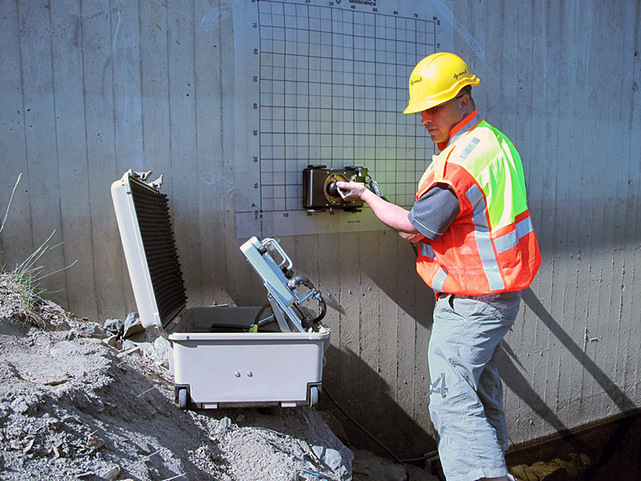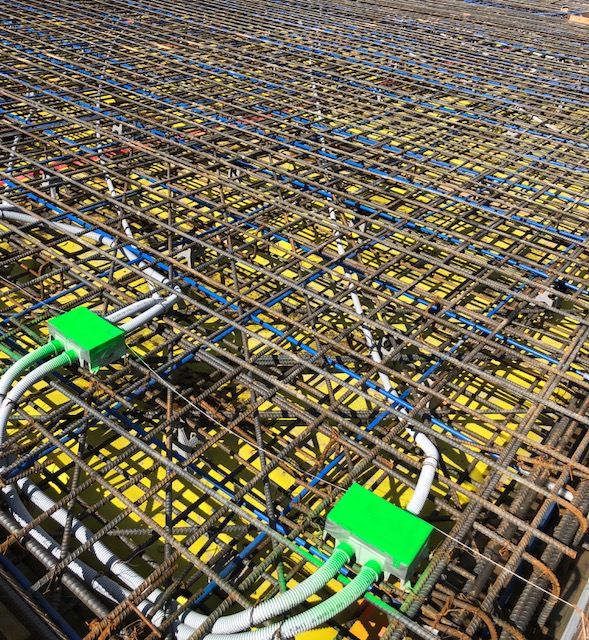Improve Your Job with RainierGPR Concrete Scanning Solutions
Improve Your Job with RainierGPR Concrete Scanning Solutions
Blog Article
Maximizing Effectiveness and Decreasing Dangers: The Duty of Concrete Scanning in Construction
In the realm of construction, where accuracy and safety and security are paramount, the usage of concrete scanning modern technology has actually come to be an important device for task supervisors and designers alike. By utilizing innovative scanning methods, building groups can browse complicated atmospheres with enhanced effectiveness while mitigating prospective dangers that can endanger both spending plans and timelines.
Value of Concrete Scanning
Concrete scanning plays a vital role in guaranteeing the structural honesty and safety of construction projects by accurately discovering ingrained things and potential threats within concrete frameworks. By making use of numerous scanning innovations such as ground-penetrating radar (GPR) and electromagnetic induction, construction teams can determine rebar, post-tension cables, conduits, and various other hidden obstacles prior to drilling, reducing, or coring right into concrete. This positive method assists protect against costly damages, injuries, and project hold-ups that might occur from accidentally striking these objects during building tasks.
In addition, the precise mapping of embedded things guarantees the efficient implementation of building and construction plans, decreasing the risk of mistakes and making sure the longevity and durability of the built atmosphere. Inevitably, spending in concrete scanning solutions contributes to the overall success and security of building jobs.

Advanced Technology in Building
Given the enhancing need for precision and efficiency in building and construction techniques, the combination of innovative innovation has ended up being critical in improving project end results and guaranteeing ideal safety and security actions. BIM permits for far better cooperation among stakeholders, improved visualization of the project, and improved decision-making throughout the building and construction process. The execution of Augmented Reality (AR) and Virtual Fact (VR) innovations in building design and planning phases enables stakeholders to visualize the last product, determine prospective issues, and make essential modifications before building and construction begins.

Benefits of Things Mapping
The application of item mapping modern technology in building and construction jobs offers a plethora of benefits that boost job preparation and execution. Among the essential advantages of things mapping is its capacity to give in-depth and accurate information about the location of below ground energies, architectural elements, and other things within the construction website. This details is essential for ensuring that excavation and boring tasks are performed securely and successfully, reducing the risk of damages to existing infrastructure.
Moreover, things mapping modern technology makes it possible for building and construction groups to develop precise 3D versions of the website, enabling better visualization of the job and enhanced sychronisation among various professions - RainierGPR Concrete Scanning. This improved spatial recognition helps to identify prospective clashes and disputes early in the preparation phases, lowering the need for costly rework and hold-ups throughout construction
Furthermore, things mapping can also streamline the documentation procedure by giving electronic documents of the site in the past, during, and after building. These documents offer as valuable referrals for future maintenance and renovation jobs, ultimately improving the long-term effectiveness and sustainability of the developed setting.
Avoiding Expensive Mistakes
Object mapping technology's role in building and construction find out this here expands beyond enhancing task planning and execution to encompass a vital aspect: preventing costly mistakes. By employing advanced concrete scanning methods, building groups can determine possible threats such as rebar congestion, post-tension wires, or spaces within concrete frameworks. Detecting these problems beforehand aids in preventing expensive mistakes during the building procedure. As an example, hitting a you could try this out post-tension cable during drilling can cause structural damage, delays, and increased expenses for fixings. In addition, properly drawing up existing energies underground can protect against unintended damages throughout excavation, conserving both time and cash. Additionally, by utilizing item mapping innovation, construction groups can make certain that building elements are mounted in the correct locations, decreasing the probability of rework or retrofitting due to lost elements. Generally, the aggressive use concrete scanning modern technologies in building and construction projects significantly decreases the threat of errors and ultimately adds to set you back financial savings and task efficiency.
Ensuring Security and Top Quality
To support the highest possible criteria of safety and security and top quality in building projects, the application of concrete scanning modern technology plays an essential function. By making use of sophisticated scanning techniques such as ground-penetrating radar (GPR) and electromagnetic induction, building teams can discover prospective dangers hidden within concrete frameworks before starting any job. This aggressive technique not only minimizes the risk of accidents on the construction website but additionally guarantees the architectural integrity of the structure.
Concrete scanning likewise assists in verifying the positioning of rebar, conduits, and post-tension cable televisions, guaranteeing that these elements are correctly positioned according to the design specifications. This accuracy in finding essential elements assists avoid errors during the building and construction procedure, eventually causing this post a better completed product. Furthermore, by recognizing any abnormalities or incongruities within the concrete beforehand, required adjustments can be made immediately, lowering the probability of rework and expensive delays.
Essentially, concrete scanning modern technology offers as an important tool in securing both the safety of construction employees and the general quality of the constructed environment. Its ability to identify prospective risks and ensure adherence to style standards makes it a vital property in modern-day building practices.

Conclusion
To conclude, concrete scanning plays a vital function in making best use of performance and decreasing threats in building and construction tasks. By utilizing advanced technology for object mapping, possible pricey blunders can be protected against, making certain safety and security and top quality of the final structure. It is essential for construction firms to focus on the use of concrete scanning to improve performance, alleviate dangers, and supply top quality cause their tasks.
Concrete scanning plays a critical duty in guaranteeing the structural integrity and safety and security of building projects by precisely finding embedded objects and prospective risks within concrete frameworks. The execution of Enhanced Reality (AR) and Digital Reality (VR) innovations in construction layout and planning phases enables stakeholders to visualize the final item, identify possible problems, and make required adjustments before construction begins. By using innovative concrete scanning techniques, building and construction teams can determine potential risks such as rebar congestion, post-tension cords, or gaps within concrete structures. On the whole, the aggressive usage of concrete scanning innovations in construction tasks substantially minimizes the risk of errors and eventually adds to cost savings and job performance.
To support the highest possible standards of security and quality in building and construction projects, the application of concrete scanning modern technology plays a critical duty.
Report this page